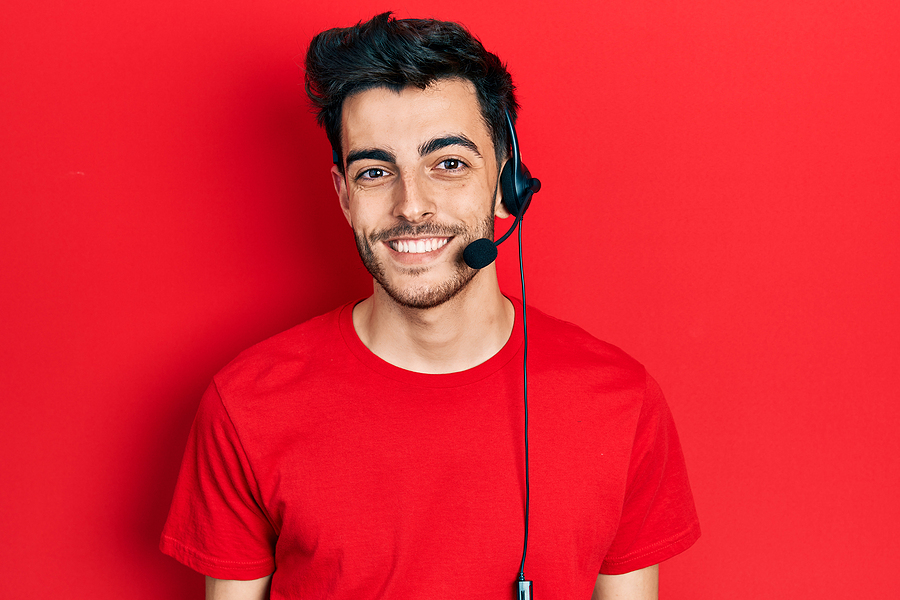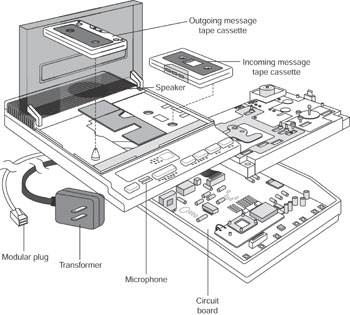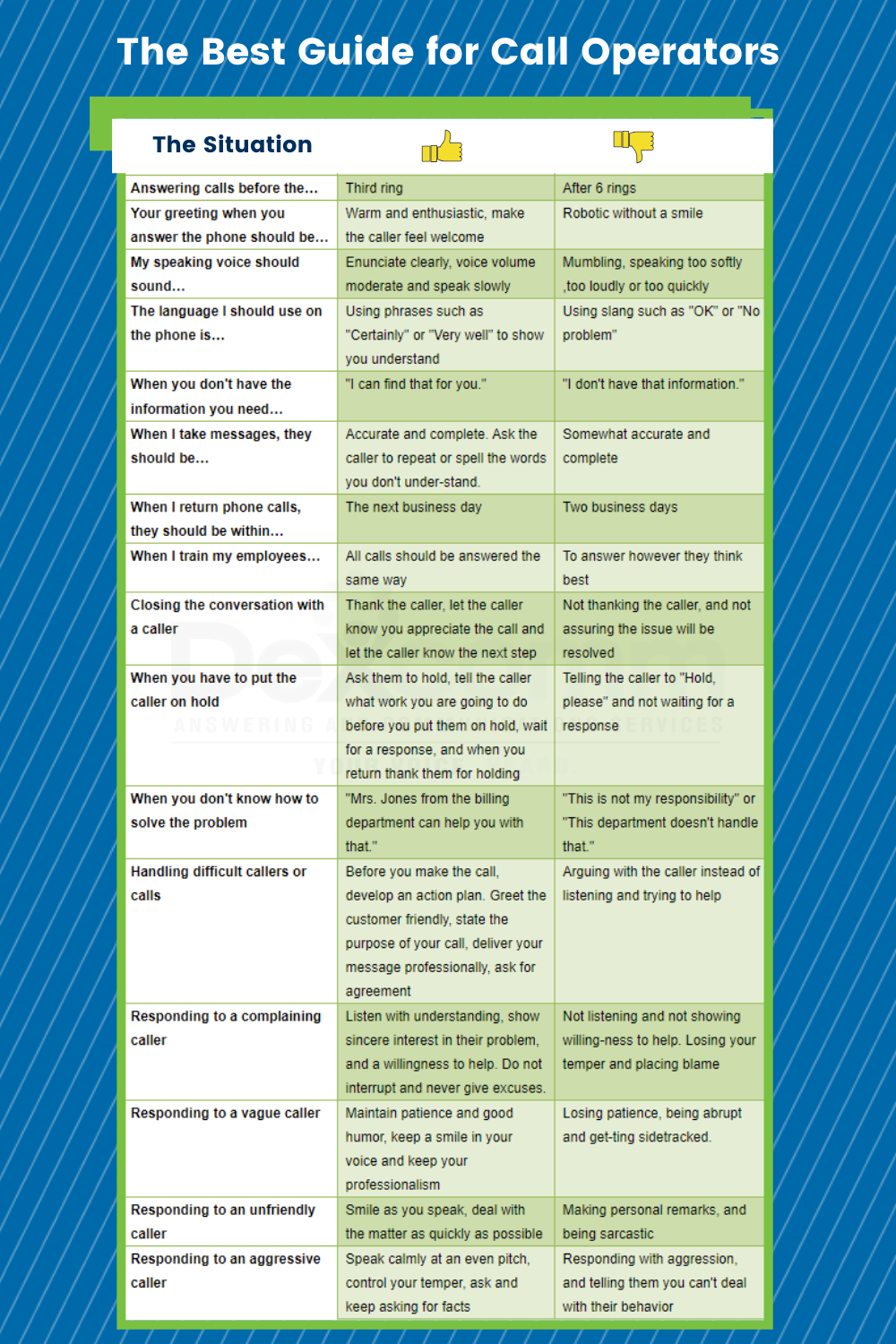All Categories
Featured
Table of Contents
- – Best A Guide To Using Automated Answering Syste...
- – A Better How Outsourced Phone Answering Servic...
- – Best Phone Answering Services - Ruby Reception...
- – Which Is The Best The Ultimate Guide To Telep...
- – What Are The Highest Rated Telephone Answerin...
- – What Is The Best Benefits Of Answering Servi...
Best A Guide To Using Automated Answering Systems Shop Near Me
This gadget and its followers were designed by Sava Jacobson, an electrical engineer with a personal consulting organization. While early voice mail used magnetic tape innovation, a lot of modern devices utilizes solid state memory storage; some gadgets utilize a combination of both, with a solid-state circuit for the outgoing message and a cassette for the inbound messages.
"toll conserving" below) (answering service). This is useful if the owner is evaluating calls and does not wish to talk with all callers. In any case after going, the calling celebration should be notified about the call having actually been responded to (in most cases this starts the charging), either by some remark of the operator, or by some greeting message of the TAD, or resolved to non-human callers (e.
This holds specifically for the TADs with digitally stored greeting messages or for earlier machines (before the rise of microcassettes) with a special unlimited loop tape, separate from a second cassette, devoted to recording. There have been answer-only gadgets without any recording capabilities, where the welcoming message had to notify callers of a state of present unattainability, or e (call answering services).
A Better How Outsourced Phone Answering Service Can Help Your ...?

about schedule hours. In taping TADs the greeting generally includes an invitation to leave a message "after the beep". An answering machine that utilizes a microcassette to record messages On a dual-cassette answerphone, there is an outbound cassette, which after the defined variety of rings plays a pre-recorded message to the caller.

Single-cassette answering machines contain the outbound message at the beginning of the tape and incoming messages on the staying space. They first play the announcement, then fast-forward to the next offered area for recording, then record the caller's message. If there are numerous previous messages, fast-forwarding through them can cause a considerable delay.
This beep is typically described in the welcoming message, requesting that the caller leave a message "after the beep". Little bits with digital storage for the taped messages do disappoint this delay, obviously. A little bit may offer a push-button control facility, whereby the answerphone owner can call the house number and, by entering a code on the remote telephone's keypad, can listen to recorded messages, or delete them, even when far from house.
Best Phone Answering Services - Ruby Receptionist Services

Thus the machine increases the variety of rings after which it addresses the call (normally by two, leading to 4 rings), if no unread messages are presently saved, however responses after the set variety of rings (normally 2) if there are unread messages. This permits the owner to discover whether there are messages waiting; if there are none, the owner can hang up the phone on the, e.
Some machines likewise enable themselves to be remotely triggered, if they have actually been turned off, by calling and letting the phone ring a particular a great deal of times (normally 10-15). Some service suppliers desert calls already after a smaller sized number of rings, making remote activation impossible. In the early days of TADs a special transmitter for DTMF tones (dual-tone multi-frequency signalling) was regionally needed for push-button control, since the previously utilized pulse dialling is not apt to convey proper signalling along an active connection, and the dual-tone multi-frequency signalling was executed stepwise.
Any incoming call is not identifiable with regard to these homes in advance of going "off hook" by the terminal equipment. So after going off hook the calls should be changed to appropriate devices and only the voice-type is instantly accessible to a human, however perhaps, however need to be routed to a LITTLE BIT (e.
Which Is The Best The Ultimate Guide To Telephone Answering Services To Buy
What if I informed you that you do not have to really choose up your device when responding to a client call? Somebody else will. So practical, best? Addressing phone calls doesn't need someone to be on the other end of the line. Efficient automated phone systems can do the trick just as effectively as a live agent and sometimes even much better.
An automated answering service or interactive voice reaction system is a phone system that communicates with callers without a live person on the line - virtual telephone answering. When business utilize this technology, customers can get the response to a concern about your organization simply by using interactions established on a pre-programmed call circulation.
Although live operators update the client service experience, numerous calls do not require human interaction. A basic recorded message or guidelines on how a customer can obtain a piece of information generally solves a caller's instant requirement - telephone answering service. Automated answering services are an easy and reliable method to direct inbound calls to the ideal person.
What Are The Highest Rated Telephone Answering Service Sydney - Virtual Office Sydney?
Notice that when you call a business, either for support or item query, the first thing you will hear is a pre-recorded voice greeting and a series of alternatives like press 1 for client service, press 2 for inquiries, and so on. The pre-recorded choices branch out to other choices depending upon the consumer's selection.
The phone tree system assists direct callers to the ideal individual or department utilizing the keypad on a smart phone. In some circumstances, callers can utilize their voices. It deserves keeping in mind that auto-attendant alternatives aren't limited to the ten numbers on a phone's keypad. Once the caller has picked their very first choice, you can design a multi-level auto-attendant that uses sub-menus to direct the caller to the ideal type of support.
The caller does not need to interact with an individual if the auto-attendant phone system can manage their concern. The automated service can path callers to a worker if they reach a "dead end" and require support from a live agent. It is pricey to work with an operator or executive assistant.
What Is The Best Benefits Of Answering Service - Professional Services?
Automated answering services, on the other hand, are considerably cheaper and offer considerable cost savings at an average of $200-$420/month. Even if you don't have devoted staff to manage call routing and management, an automatic answering service improves performance by allowing your team to focus on their strengths so they can more efficiently spend their time on the phone.
A sales lead routed to client service is a lost shot. If a customer who has product concerns reaches the wrong department or receives insufficient answers from well-meaning employees who are less trained to handle a specific type of question, it can be a reason for aggravation and dissatisfaction. An automated answering system can decrease the number of misrouted calls, consequently helping your staff members make much better usage of their phone time while maximizing time in their calendar for other jobs.
With Automated Answering Systems, you can develop a customized experience for both your staff and your callers. Make a recording of your main welcoming, and simply upgrade it regularly to reflect what is going on in your organization. You can produce as many departments or menu choices as you desire.
Table of Contents
- – Best A Guide To Using Automated Answering Syste...
- – A Better How Outsourced Phone Answering Servic...
- – Best Phone Answering Services - Ruby Reception...
- – Which Is The Best The Ultimate Guide To Telep...
- – What Are The Highest Rated Telephone Answerin...
- – What Is The Best Benefits Of Answering Servi...
Latest Posts
Cost-Effective Call Answering Service
Trusted Business Answering Service Near Me – Australia
After Hours Answering Service Near Me – Australia
More
Latest Posts
Cost-Effective Call Answering Service
Trusted Business Answering Service Near Me – Australia
After Hours Answering Service Near Me – Australia